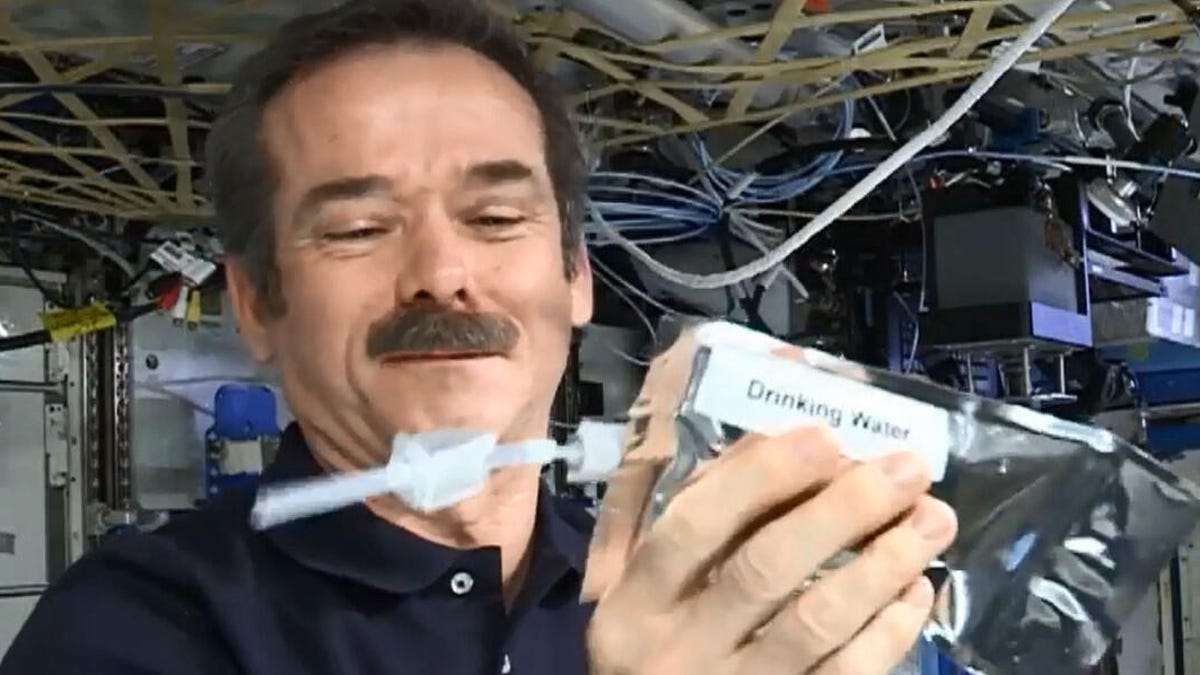Contaminated water on the space station not growing killer bacteria
The ISS water dispenser gets a thorough check-up.

Astronaut Chris Hadfield examines a bag of drinking water.
The drinking water on the International Space Station has been colonized by two hardy species of bacteria, but a new analysis shows they're no more dangerous than those you are likely to encounter on Earth.
The water dispenser on the ISS was originally delivered in 2009, and because lugging water from Earth is an expensive process, it uses specialized filters to recycle drinking water. It also contains iodine, a bacteria-killer, that's filtered out before drinking. However, immediately after the dispenser was installed, an analysis found it to be contaminated by bacteria from the genus Burkholderia, forcing astronauts aboard the station to turn to a Russian back-up water system.
Two species, Burkholderia cepacia and Burkholderia contaminans, were likely introduced to the dispenser before it rocketed off the planet, but they were able to hold out in the system on the journey to space and survive decontamination procedures. These species can be problematic for human beings with compromised immune systems, such as patients with cystic fibrosis.
The study, published in the open-access journal PLOS One on Wednesday, looked at both of these species, collected from the drinking water system on the ISS between 2010 and 2014, examining the DNA and physical characteristics of the two bugs. They found 24 different strains of the bacteria but showed they were all very similar, likely stemming from two parent strains growing in the system when the dispenser left Earth.
They also demonstrated the ability for the bacteria to enter human immune cells and split them open was no different than between strains found on the space station and those found on Earth and their resistance to antibiotics was practically unchanged.
That's good news: The conditions on the ISS aren't somehow making bacteria super-deadly or more resistant to antibiotics over time. There was little reason to think that might be the case, but it's good to know all the same.
The water system is set to be replaced with a new system once it fails and will undergo a different decontamination method after installation. Other disinfectants have also been suggested, such as silver. The authors note there may be value in testing how iodine and silver compare in the disinfection process.
You might think of the ISS as a sterile workspace -- too harsh a place for bacteria to survive -- but where there are humans, there are microorganisms and previous studies have shown a range of bacteria and fungi make their homes in the orbiting lab. Sometimes, we even send the microscopic beasts up ourselves, in an attempt to better understand their biology and how they might protect us in space.

